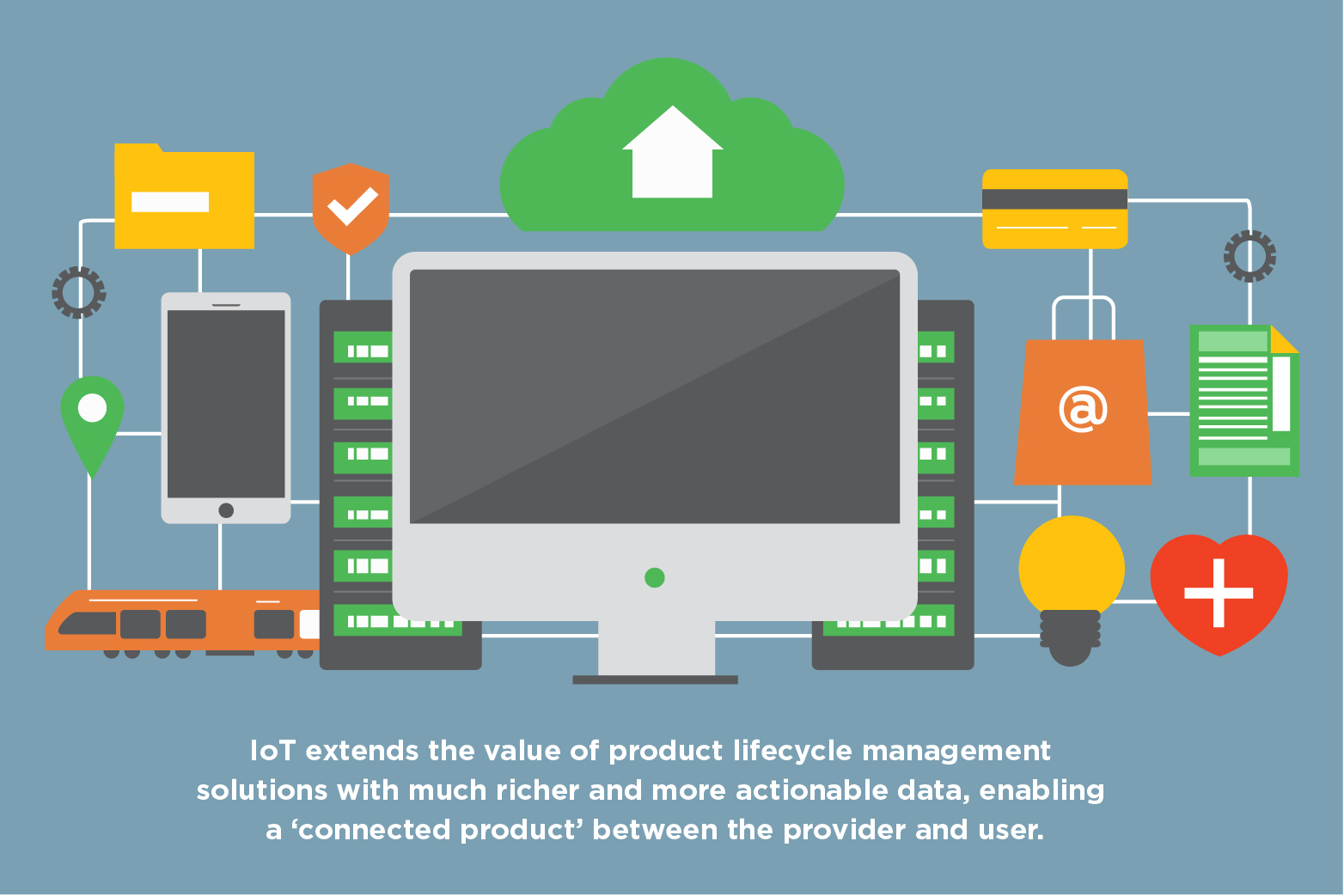The growth of the IoT has reinvigorated the product lifecycle management (PLM) solution space. Although PLM platforms have always theoretically offered consolidated tracking and management of all product-related data, pre-IoT they didn’t deliver the continuous feedback necessary for truly knowing a product’s state at any given moment.
Where PLM solutions have come up short in the past
PLM implementations at most organizations often never extended far beyond engineering teams. They were designed to handle CAD drawings and technical engineering data, often in a complex, overengineered fashion that was not user-friendly to other teams.
Further, traditional PLM solutions historically could not capture data about a product’s real-world performance once it went to a customer. Accordingly, companies could not see how that product performed or how its design held up under specific environmental conditions. Additionally, product testing was not always a great representation of what conditions the product might find itself in once in the field.
As a result of these PLM-related shortcomings, organizations have faced challenges in building complex products that changed rapidly based on real-world applications. Now that many products have more embedded software and electronics than ever before, organizations need holistic insights into performance and feedback, but such information is often lacking.
An Aberdeen survey found that organizations often cite challenges related to:
- Disconnected systems, processes, and departments (cited by 49% of companies that launch 10+ products per year).
- Subpar data quality (26%).
- Overly frequent engineering change orders (31%).
Multiple spreadsheets, email attachments, and other ad hoc measures fill in the gaps left by disparate PLM implementations. The same survey revealed that 29% of companies with non-consolidated PLM systems had product development processes that took over 5 years, compared to just 14% of organizations with consolidated PLMs.

The new capabilities and possibilities of PLM
Modern PLM solutions are more sophisticated than their predecessors, to the extent that they enable use cases across multiple business units in an organization. PLM leaders rely on the real-time visibility of these platforms for everything from change and configuration management to external collaboration.
The key components of advanced, IoT-powered PLM solution are:
1. Real-time IoT sensor data
Networked IoT devices can be set up to gather data on devices in the field and instantly relay it back to a PLM platform. For example, an IoT sensor might transmit vibration data from an industrial machine or provide details about seldom-used product features.
In both cases, the effect is the creation of a closed-loop that connects product design, feedback, and iteration. Organizations can more quickly resolve errors, fix safety issues, and incorporate additional functionality.
2. Digital twins and a digital thread
Accurate simulation is vital with complex products. The data gathered by IoT infrastructure in the field and from across the supply chain can be funneled into a digital twin, which is a complete virtual representation of a physical product. Engineers and designers can see where a product is performing well and where it may be at risk of breakdown.
Moreover, IoT-connected PLM provides a common hub for multiple systems of record, serving as a “system of systems” that includes a digital thread for a company’s products. A digital thread is a consolidated view of the flow of all information about a product, showing how it is connected to data sources and supporting systems, as well as how it has evolved over time.
3. Cloud computing infrastructure
Like other essential business platforms, PLM tools have moved into the cloud. Cloud-based PLM has substantial advantages over legacy systems, including:
- More manageable costs that are billed as operating expenditures.
- Easier system maintenance and upgradeability.
- Scalable resources that can be matched to evolving workloads.
- Security managed primarily by the service provider.
Cloud-based PLM that draws upon the scale and real-time insight available through the IoT is the future. As companies look to gain more value from their PLM solutions and use them in contexts other than just engineering, working with a trusted Oracle partner on the necessary migrations is crucial.
Inspirage is an experienced Oracle partner with a track record of success on PLM, ERP, and supply chain implementations for companies of all types. Learn more about how we can guide your next project by contacting us.